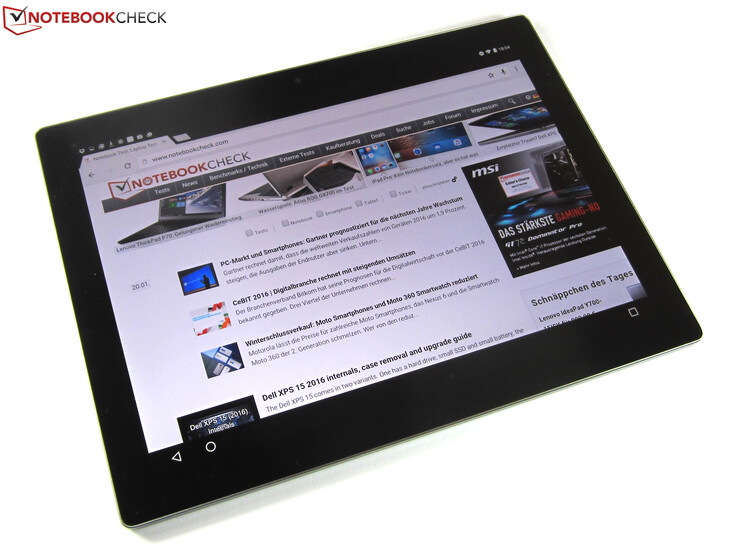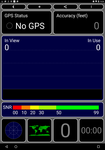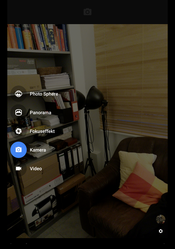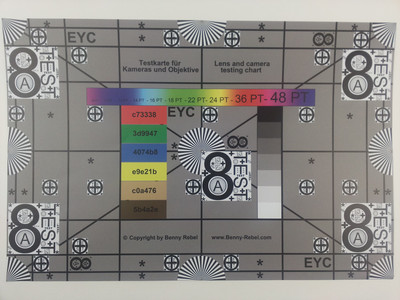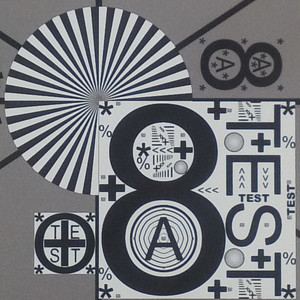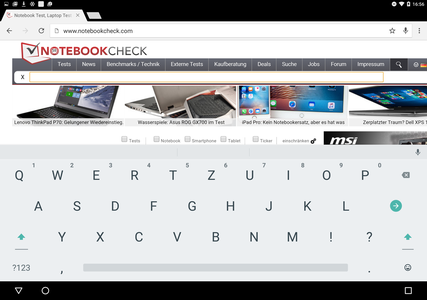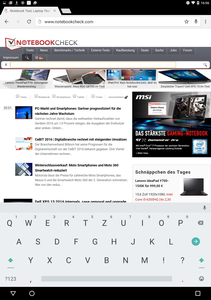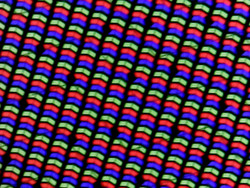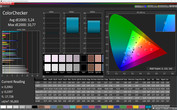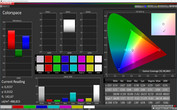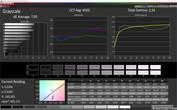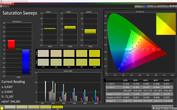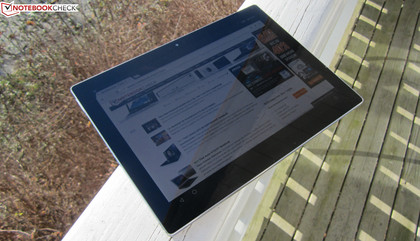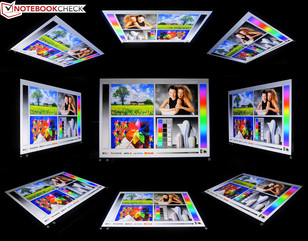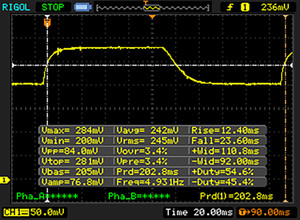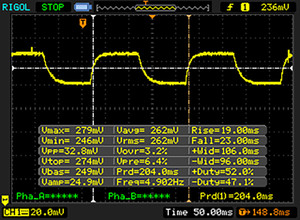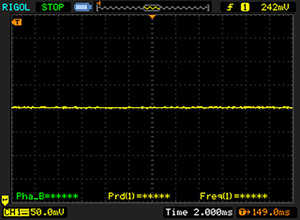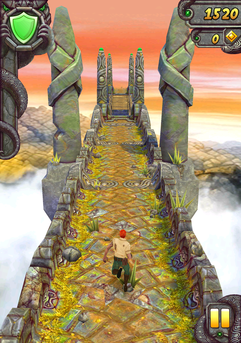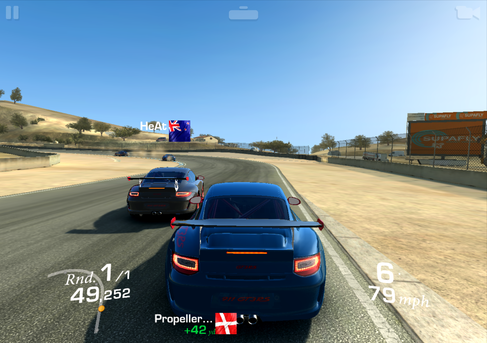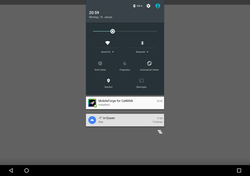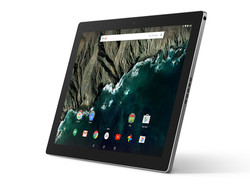Google Pixel C Tablet Review
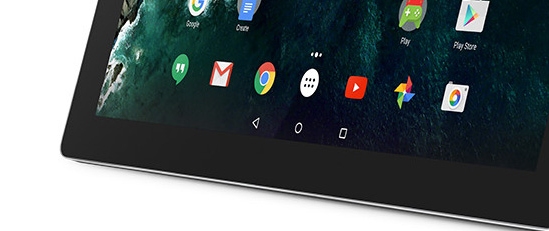
For the original German review, see here.
Google tries something new with the Pixel C, both in terms of design and production. The Pixel C is equipped with a 10.2-inch display as well as Android 6.0 and is, contrary to the Nexus tablets, designed by Google itself. It also stands out from the competition with its hybrid design, because you can just use the tablet like a common notebook with the optional keyboard dock. The latter uses a Bluetooth connection and is attached to the tablet via a magnetic strip. This might sound like a fragile connection, but it turned out to be very strong during the review. The keyboard did not fall off when we carried, tilted or bumped the tablet and you will need some force to detach it.
The Google Pixel C features high-end components. It leaves a very classy impression thanks to its nice chassis made of anodized aluminum and the high-res screen (2560x1800 pixels) with a high pixel density of 308 PPI. Underneath the metal bonnet are 3 GB RAM and the very fast SoC Nvidia Tegra X1 including a Maxwell GPU. The good connectivity is completed by a Wi-Fi module with 802.11ac support, a USB Type-C port as well as an 8 MP main camera.
We compare the Google Pixel C with the Apple iPad Air 2, Google Nexus 9, Samsung Galaxy Tab S2 9.7 LTE and the Sony Xperia Z4.
Case
The Google Pixel C is 7 mm (~0.3 in) thin and slightly smaller than a DIN-A4 paper with a footprint of 24.2 x 17.9 cm (~9.5 x 7.0 in). Thanks to its chassis, made of anodized aluminum, the 10.2-inch tablet feels just as sophisticated as the tablets from Apple, which are always lauded for their tactile feel. It also looks very nice with its matte surfaces, the simple design and the slightly rounded edges. This also applies to the optional keyboard, which features anodized aluminum. The metal unibody makes both components extremely sturdy. We could only slightly warp the Pixel C with a lot of force, but there was no creaking or the like. Both the power button and the volume rocker are well integrated and very responsive, even though they are a bit small when you consider the dimensions of the 10.2-inch tablet.
Similar to the Chromebook, you get a strip with four LEDs at the back. They are illuminated in green, yellow, red and blue when the tablet is turned on. They will also light up in green when you tap on the display twice while the device is turned off or in standby to indicate the charging status of the battery.
Google equipped the Pixel C with a 34.2 Wh battery, so the 10.2-inch tablet is slightly heavier than the Apple iPad Air 2 with a 27.6 Wh module (444 grams/~15.7 oz) at 517 grams (~18.2 oz), for example. But the difference is not huge, so the handling of the Pixel C is still very comfortable.
Connectivity
Google offers two versions of the Pixel C. The 32 GB model retails for around 550 Euros (~$617), while the 64 GB model is 100 Euros (~$112) more expensive. You should actually think about the storage capacity because the Google tablet does not have a microSD slot, so you cannot expand the storage. The Pixel C keyboard, which tips the scale at 400 grams (~14 oz) and is just as sophisticated as the tablet, costs another 170 Euros (~$191).
The components as well as the port equipment are independent of the storage configuration. The Google tablet is equipped with the high-end SoC Nvidia Tegra X1 in combination with a Maxwell GPU, which has 256 shaders. The ARM quad-core is currently one of the fastest tablet SoCs and can compete with the Samsung Exynos 5433 or Qualcomm Snapdragon 810. The amount of memory is also very generous at 3 GB.
The Google Pixel C sports a USB Type-C port to charge the device and transfer files. A data cable, however, is not included in the box, and the charging cable is fixed at the PSU, so you can only use it to charge the battery.
Software
The operating system of the Google Pixel C is Android 6.0.1 Marshmallow. You also get Google services like Chrome, Gmail, Drive, Hangouts and YouTube. The manufacturer waives additional or special apps, so that only around 400 MB were used on our 64 GB review unit. The operating system occupies much more space, only 52.9 GB are available for your own files and apps after the initial setup. There is no microSD slot, so you cannot expand the storage.
Contrary to the predecessor, the new Android version 6 comes with many new features, including an improved power-saving mode, optimized app performance thanks to Android Runtime (ART) as well as more privacy and security when you execute apps. A summary about all new features is available here.
Communication & GPS
Connections with the Internet and other devices can be established via Wi-Fi and Bluetooth 4.1+HS. The latter stands for High-speed and enables the tablet to use an additional data channel based on Wi-Fi in addition to the Bluetooth connection to accelerate data transfers. The Wi-Fi module supports the fast 802.11ac standard both in 2.4 and 5 GHz networks. There are two antennas to receive and transmit each (MIMO 2x2). The Pixel C delivered the expected high performance and the signal is not weaker even with 1 or 2 walls between the device and the router. WWAN and GPS are not available on the Pixel C, you will have to use tethering via smartphone instead, for example.
Cameras & Multimedia
Google equipped the Google Pixel C with two cameras: a 2.1 MP webcam in the upper display frame (center) as well as an 8 MP main camera, which is slightly hidden in the upper right corner at the back. The latter takes pictures at 3280x2460 pixels and 1080p videos, just like the webcam. Both also use the same camera menu, where you can only change some settings besides the resolution. Your options are pretty much limited to a panorama and macro mode, a manual exposure as well as a timer. The tablet does not have an LED flash.
While the webcam works well for video chats and selfies, we have higher expectations for the main camera. The Google Pixel C cannot quite keep up with very good cameras like the sensor of the Apple iPhone 6S Plus, for example, but takes surprisingly sharp and high-quality pictures for a tablet that convince with high contrast and vivid colors. The quality suffers in low-light situations though, where the pictures are noisy and therefore not very sharp when you have a closer look.
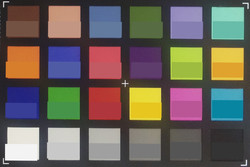
Color Accuracy & Sharpness
We also check the quality of the 8 MP camera at the back of the Google Pixel C under controlled lighting conditions. We take a picture of the X-Rite ColorChecker Passport and compare the results with the original colors. The results are not edited (no manual white balance) afterwards. The Google Tablet is pretty close to the original in terms of white balance and the colors. Blue shades on the other hand are a problem for the Pixel C – they clearly differ from the original and are sometimes too bright, sometimes too rich.
Similar to the X-Rite ColorChecker Passport, we also take a picture of our test chart under controlled lighting conditions. The sharpness of the Google Pixel C is very good. If you look at the section (original size) from the center, you can see some drawbacks like the slightly frayed and blurry edges at the transition of black and white picture contents. Still, the issues are very small.
Accessories & Warranty
Google ships the Pixel C with a quick-start guide as well as a 15-watt power adapter. The USB connector (Type-C) is directly attached to the PSU, so you can only use it to charge the tablet. A USB Type-C cable to transfer data is not included.
Google offers several accessories for the Pixel C in its online shop, including the Pixel C keyboard for 170 Euros (~$191). You can also get a Chromecast adapter or the Nexus Player to stream videos. The missing USB Type-C cable is also available and retails for almost 15 Euros (~$17). Google grants a warranty of 24 months for the Pixel C.
Input Devices & Handling
As you can expect from a fast tablet, the Google Pixel C executes inputs immediately, it does not matter if you use the touchscreen or the power and volume buttons. Apps launch without noticeable delays, menus and settings are instantly shown – in short, the handling of the Pixel C is a joy.
If you decide to buy the Pixel C keyboard, you will get an interesting piece of hardware. The box of the keyboard also includes a comprehensive step-by-step manual, which can actually be helpful, because you cannot see a docking port and it is not clear how you connect the tablet and the keyboard at first. The solution is the magnet inside the foldable stand above the numbers row, which extends over the whole width of the keyboard. As soon as you hold the tablet against it, it will be automatically aligned by the magnets. Only one docking position is possible and the webcam has to be at the top. Once both devices are connected, you will have to enter a six-digit passcode from the Android system on the keyboard (only once), so it can communicate with the tablet.
Thanks to the foldable stand, you can just use the tablet like a usual notebook display. It does not matter if you lift the Pixel C at the keyboard or the tablet, the magnet will always provide a strong connection. The foldable stand is also very sturdy. Similar to a notebook, you can also close the display. In this case, the 0.5-Wh battery inside the keyboard will be charged. The other way around – the charging of the tablet via keyboard – is not possible, so the keyboard will actually slightly reduce the runtime of the Pixel C.
The keyboard convinces with conveniently large keys, a precise pressure point and a good feedback. If you have to type longer texts, you will get a good input. However, the Pixel C keyboard does not result in a real notebook, because you still have to use the touch controls. The keyboard does not have a Home or Back key for the navigation in Android menus. After a certain time-out, it sometimes happened that the keyboard needed one or two seconds before it accepted inputs – the Bluetooth connection was probably re-established.
Display
The 10.2-inch display of the Pixel C has a resolution of 2560x1800 pixels, which results in a pixel density of 308 PPI and a razor-sharp picture. The Apple iPad Air 2 cannot keep up with that, but still manages very respectable results with 2048x1536 pixels and a pixel density of 264 PPI.
The unusual aspect ratio of the Pixel C – the square root of 2 – is similar to a sheet of paper according to the DIN-A standard. The display surface of the Google tablet is pretty much identical to DIN-A5 – very handy if you want to read texts or look at documents. In return, there will be black bars at the top and the bottom when you watch videos.
We can measure an average luminance of 509.8 cd/m² for the LC display, which is very high and it is therefore easy to use outdoors. By the way, the same applies for all the other comparison devices as well. The Sony Xperia Z4 is closest to the Google tablet, but not quite as bright. Another advantage of the Pixel C over its rivals is the very even brightness distribution of 91 percent. A black value of 0.39 cd/m² and a contrast ratio of 1249:1 are also great results and you can benefit from very vivid colors and deep blacks.
| |||||||||||||||||||||||||
Brightness Distribution: 91 %
Center on Battery: 487 cd/m²
Contrast: 1249:1 (Black: 0.39 cd/m²)
ΔE ColorChecker Calman: 5.24 | ∀{0.5-29.43 Ø4.78}
ΔE Greyscale Calman: 7.95 | ∀{0.09-98 Ø5}
Gamma: 2.16
CCT: 6565 K
| Google Pixel C Tegra X1 Maxwell GPU, X1, 64 GB eMMC Flash | Apple iPad Air 2 2014 PowerVR GXA6850, A8X, 128 GB eMMC Flash | Google Nexus 9 GeForce ULP K1 (Tegra K1 Kepler GPU), K1 (Denver), 32 GB eMMC Flash | Samsung Galaxy Tab S2 9.7 LTE Mali-T760 MP6, Exynos 5433, 32 GB eMMC Flash | Sony Xperia Z4 Tablet Adreno 430, 810 MSM8994, 32 GB eMMC Flash | |
|---|---|---|---|---|---|
| Screen | -2% | -12% | 18% | -22% | |
| Brightness middle (cd/m²) | 487 | 423 -13% | 430 -12% | 358 -26% | 471 -3% |
| Brightness (cd/m²) | 510 | 427 -16% | 411 -19% | 357 -30% | 457 -10% |
| Brightness Distribution (%) | 91 | 92 1% | 92 1% | 86 -5% | 92 1% |
| Black Level * (cd/m²) | 0.39 | 0.61 -56% | 0.77 -97% | 0.46 -18% | |
| Contrast (:1) | 1249 | 693 -45% | 558 -55% | 1024 -18% | |
| Colorchecker dE 2000 * | 5.24 | 2.86 45% | 3.17 40% | 1.78 66% | 8.69 -66% |
| Greyscale dE 2000 * | 7.95 | 2.37 70% | 3.29 59% | 1.38 83% | 11.24 -41% |
| Gamma | 2.16 102% | 2.43 91% | 2.39 92% | 2.24 98% | 2.17 101% |
| CCT | 6565 99% | 6941 94% | 6746 96% | 6366 102% | 9508 68% |
| Color Space (Percent of AdobeRGB 1998) (%) | 88 | 62 | |||
| Color Space (Percent of sRGB) (%) | 99 |
* ... smaller is better
We use the X-Rite photo spectrometer X-Rite i1Pro 2 and the CalMAN software to evaluate the color accuracy of the Pixel C, but the results are not that good. You can expect the deviations of the colors and the grayscale of a high-end tablet to not be higher than 3. The DeltaE deviations of the Pixel C, however, are too high for the colors at 5.24 and way too high for the grayscale at 7.95. The comparison devices like the Apple iPad Air 2, Google Nexus 9 and Samsung Galaxy Tab S2 9.7 LTE show better results. Still, you can hardly see the differences in practice. The color temperature on the other hand is very good, because 6565 K are just slightly above the ideal value of 6500 K.
Thanks to an average luminance of more than 500 cd/m², the Google Pixel C can definitely be used outdoors, where the luminance should be higher than 200 cd/m². The glossy screen can still be a problem under direct sunlight. It convinces with high viewing angle stability in return. You can always see the display content, even from extreme angles, only the brightness will be slightly reduced in this case. The good color presentation, however, is not affected.
Display Response Times
| ↔ Response Time Black to White | ||
|---|---|---|
| 36 ms ... rise ↗ and fall ↘ combined | ↗ 12.4 ms rise | |
| ↘ 23.6 ms fall | ||
| The screen shows slow response rates in our tests and will be unsatisfactory for gamers. In comparison, all tested devices range from 0.1 (minimum) to 240 (maximum) ms. » 93 % of all devices are better. This means that the measured response time is worse than the average of all tested devices (20.2 ms). | ||
| ↔ Response Time 50% Grey to 80% Grey | ||
| 42 ms ... rise ↗ and fall ↘ combined | ↗ 19 ms rise | |
| ↘ 23 ms fall | ||
| The screen shows slow response rates in our tests and will be unsatisfactory for gamers. In comparison, all tested devices range from 0.165 (minimum) to 636 (maximum) ms. » 66 % of all devices are better. This means that the measured response time is worse than the average of all tested devices (31.6 ms). | ||
Screen Flickering / PWM (Pulse-Width Modulation)
| Screen flickering / PWM not detected | |||
In comparison: 53 % of all tested devices do not use PWM to dim the display. If PWM was detected, an average of 8111 (minimum: 5 - maximum: 343500) Hz was measured. | |||
Performance
The Nvidia Tegra X1 inside the Google Pixel C is a powerful ARM SoC, which uses a combination of four frugal Cortex-A53 cores and four faster Cortex-A57 cores. Contrary to the Samsung Exynos 5433 or the Qualcomm Snapdragon 810 MSM8994 in the Sony Xperia Z4, the Nvidia chip never uses all eight cores at the same time, but either the Cortex-A53 or the Cortex-A57 cores. Handy side effect: Because of this separation, the Tegra X1 is supposed to be twice as efficient as the Samsung Exynos 5433 according to Nvidia.
Our benchmarks show that the SoC architecture of the Google tablet does not have a disadvantage compared to the Samsung and Qualcomm SoCs. All in all, the Pixel C performs much better than the Samsung Galaxy Tab S2 9.7 LTE (Samsung Exynos 5433) and Sony Xperia Z4 (Qualcomm Snapdragon 810 MSM8994) in the synthetic benchmarks. The internal duel against the Google Nexus 9 is much more interesting, because the two tablets are almost identical in many benchmarks. The Pixel C cannot establish a real advantage over the Apple iPad Air 2 or the Nvidia Shield though – sometimes they are on par, sometimes one of them is slightly ahead. However, the Google Pixel C does not stand a chance against the Apple iPad Pro in many benchmarks.
| 3DMark - 1280x720 offscreen Ice Storm Unlimited Score (sort by value) | |
| Google Pixel C | |
| Apple iPad Air 2 2014 | |
| Apple iPad Pro 12.9 | |
| Google Nexus 9 | |
| Samsung Galaxy Tab S2 9.7 LTE | |
| Sony Xperia Z4 Tablet | |
| GFXBench 3.0 | |
| 1920x1080 1080p Manhattan Offscreen (sort by value) | |
| Google Pixel C | |
| Apple iPad Air 2 2014 | |
| Apple iPad Pro 12.9 | |
| Google Nexus 9 | |
| NVIDIA Shield Tablet LTE P1761 | |
| Samsung Galaxy Tab S2 9.7 LTE | |
| Sony Xperia Z4 Tablet | |
| on screen Manhattan Onscreen OGL (sort by value) | |
| Google Pixel C | |
| Apple iPad Air 2 2014 | |
| Apple iPad Pro 12.9 | |
| Google Nexus 9 | |
| NVIDIA Shield Tablet LTE P1761 | |
| Samsung Galaxy Tab S2 9.7 LTE | |
| Sony Xperia Z4 Tablet | |
| Smartbench 2012 | |
| Productivity Index (sort by value) | |
| Google Pixel C | |
| Google Nexus 9 | |
| Samsung Galaxy Tab S2 9.7 LTE | |
| Sony Xperia Z4 Tablet | |
| Gaming Index (sort by value) | |
| Google Pixel C | |
| Google Nexus 9 | |
| Samsung Galaxy Tab S2 9.7 LTE | |
| Sony Xperia Z4 Tablet | |
| AnTuTu v6 - Total Score (sort by value) | |
| Google Pixel C | |
| Apple iPad Air 2 2014 | |
| Apple iPad Pro 12.9 | |
| NVIDIA Shield Tablet LTE P1761 | |
| Basemark ES 3.1 / Metal - offscreen Overall Score (sort by value) | |
| Google Pixel C | |
| Apple iPad Air 2 2014 | |
| Apple iPad Pro 12.9 | |
| NVIDIA Shield Tablet LTE P1761 | |
| Sony Xperia Z4 Tablet | |
| PCMark for Android - Work performance score (sort by value) | |
| Google Pixel C | |
| Google Nexus 9 | |
| Samsung Galaxy Tab S2 9.7 LTE | |
| Sony Xperia Z4 Tablet | |
The browser performance is a strength of the Apple tablets. The Google Pixel C and the tablets from Nvidia, Samsung and Sony are pretty similar, while the Apple iPad Air 2 and the Apple iPad Pro in particular are far ahead.
| Sunspider - 1.0 Total Score (sort by value) | |
| Google Pixel C | |
| Apple iPad Air 2 2014 | |
| Apple iPad Pro 12.9 | |
| Google Nexus 9 | |
| Samsung Galaxy Tab S2 9.7 LTE | |
| Sony Xperia Z4 Tablet | |
| Octane V2 - Total Score (sort by value) | |
| Google Pixel C | |
| Apple iPad Air 2 2014 | |
| Apple iPad Pro 12.9 | |
| Google Nexus 9 | |
| Samsung Galaxy Tab S2 9.7 LTE | |
| Sony Xperia Z4 Tablet | |
| Mozilla Kraken 1.1 - Total (sort by value) | |
| Google Pixel C | |
| Apple iPad Air 2 2014 | |
| Apple iPad Pro 12.9 | |
| Google Nexus 9 | |
| Samsung Galaxy Tab S2 9.7 LTE | |
| Sony Xperia Z4 Tablet | |
| Google V8 Ver. 7 - Google V8 Ver. 7 Score (sort by value) | |
| Google Pixel C | |
| Apple iPad Air 2 2014 | |
| Apple iPad Pro 12.9 | |
| Google Nexus 9 | |
| Samsung Galaxy Tab S2 9.7 LTE | |
| Sony Xperia Z4 Tablet | |
| WebXPRT 2015 - Overall (sort by value) | |
| Google Pixel C | |
| Apple iPad Air 2 2014 | |
| Apple iPad Pro 12.9 | |
| NVIDIA Shield Tablet LTE P1761 | |
| Samsung Galaxy Tab S2 9.7 LTE | |
| Sony Xperia Z4 Tablet | |
* ... smaller is better
Both read and write data transfers on the Pixel C are fast, but, except for the sequential writes, not faster than the Samsung Galaxy Tab S2 9.7 LTE or the Sony Xperia Z4, which is a bit faster in general. While the Nvidia Shield is at the bottom of the ranking, the Google Nexus 9 wins the comparison and manages very good results in respect of random read and write operations in particular.
Games
Modern Android games can always be played smoothly on the Google Pixel C. Even more demanding titles like Real Racing 3 never have problems with stutters, delays or the like, even at the highest settings. The gaming experience is really enjoyable in combination with the precise position sensor.
Emissions
Temperature
The Pixel C only warms up to 42.3 °C (108.14 °F) under maximum load, so the tablet never feels uncomfortable. The temperature is even clearly under the 30 °C (86 °F) mark while idling and we can only measure 27.9 °C (82.22 °F) on average.
(±) The maximum temperature on the upper side is 42.3 °C / 108 F, compared to the average of 33.7 °C / 93 F, ranging from 20.7 to 53.2 °C for the class Tablet.
(+) The bottom heats up to a maximum of 36 °C / 97 F, compared to the average of 33.2 °C / 92 F
(+) In idle usage, the average temperature for the upper side is 28.7 °C / 84 F, compared to the device average of 30 °C / 86 F.
Speakers
The stereo speakers of the Pixel C are subtly located at the thin sides and are only noticeable by five thin openings each. The sound of the tablet is pretty good, and does not distort at the highest volume of 90 dB(A). Similar to the majority of mobile devices, the high and medium tones are too pronounced. This is also visible at the frequency diagram when you look at the Pink Noise frequencies between 16 and 16,000 Hz. You cannot hear deep tones, because they are just overlapped by the higher frequency on the Pixel C. The sound is much more balanced via headphones, but they are not included.
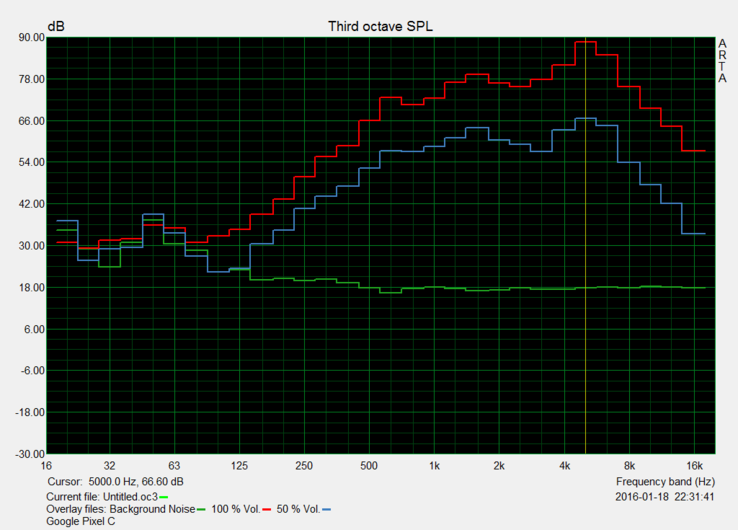
Energy Management
Power Consumption
The Pixel C consumes quite a lot of power for a 10-inch tablet. It needs almost 14 watts under load, which is much more than the Google Nexus 9 at just 9.2 watts, for example. It is more frugal than its predecessor while idling in return at 4.3 watts and even beats the frugal Samsung Galaxy Tab S2 9.7 LTE (4.5 watts). We are eager to see the battery runtimes.
| Off / Standby | |
| Idle | |
| Load |
|
Key:
min: | |
Battery Runtime
The battery runtimes of the Pixel C are really good; none of the comparison devices can keep up with the stamina of the tablet from Google. We can see the biggest advantages in the realistic Wi-Fi test, where the display brightness is adjusted to 150 cd/m². With 10:38 hours, it lasts almost two hours longer than the Sony Xperia Z4 and will easily manage a whole business day. It takes about 5.5 hours until the battery of the Pixel C is fully recharged. The Pixel C is also unbeaten in the video test and even sets a new record at 12:20 hours. Only the Sony Xperia Z4 can keep up pretty well (11:45 hours). The Apple iPad Air 2 is quite far behind at 9:22 hours.
| Google Pixel C Tegra X1 Maxwell GPU, X1, 64 GB eMMC Flash | Apple iPad Air 2 2014 PowerVR GXA6850, A8X, 128 GB eMMC Flash | Google Nexus 9 GeForce ULP K1 (Tegra K1 Kepler GPU), K1 (Denver), 32 GB eMMC Flash | Samsung Galaxy Tab S2 9.7 LTE Mali-T760 MP6, Exynos 5433, 32 GB eMMC Flash | Sony Xperia Z4 Tablet Adreno 430, 810 MSM8994, 32 GB eMMC Flash | |
|---|---|---|---|---|---|
| Battery runtime | -27% | -22% | -16% | -21% | |
| H.264 (h) | 12.3 | 9.4 -24% | 10 -19% | 10.9 -11% | 11.8 -4% |
| WiFi v1.3 (h) | 10.6 | 6.6 -38% | 8.8 -17% | ||
| Load (h) | 4.9 | 3.5 -29% | 3.7 -24% | 4.9 0% | 2.8 -43% |
| WiFi (h) | 10.5 | 9.6 |
Pros
Cons
Verdict
Many features of the 10.2-inch Google Pixel C are convincing. Thanks to its nice design and the sophisticated aluminum chassis, its visuals and tactile feel can easily compete with any iPad. Advantages are, among others, the modern Android OS, the high-end SoC Nvidia Tegra X1 with 3 GB memory, the very bright LC display with wide viewing angles and high-contrast color presentation as well as the very long battery runtimes. Furthermore, you get gadgets like the USB Type-C port and the possibility to transform the Pixel C into a kind of notebook with the optional keyboard.
Google's Pixel C is a very good tablet that can compete with the top dogs from Apple and Samsung.
There is not a whole lot to criticize: Neither the 32 GB nor the 64 GB model of the Pixel C have a microSD slot, so you should think about your storage requirements before you buy the tablet. Neither GPS nor WWAN are included – you get at least the fast Wi-Fi 802.11ac. However, we would have liked to see a USB Type-C cable to transfer files with a PC. Google unfortunately only sells it in the online shop and charges a pretty steep 15 Euros (~$17) for it. Another rather expensive accessory is the optional keyboard for 170 Euros (~$191).
Google Pixel C
- 04/13/2016 v5 (old)
Manuel Masiero




